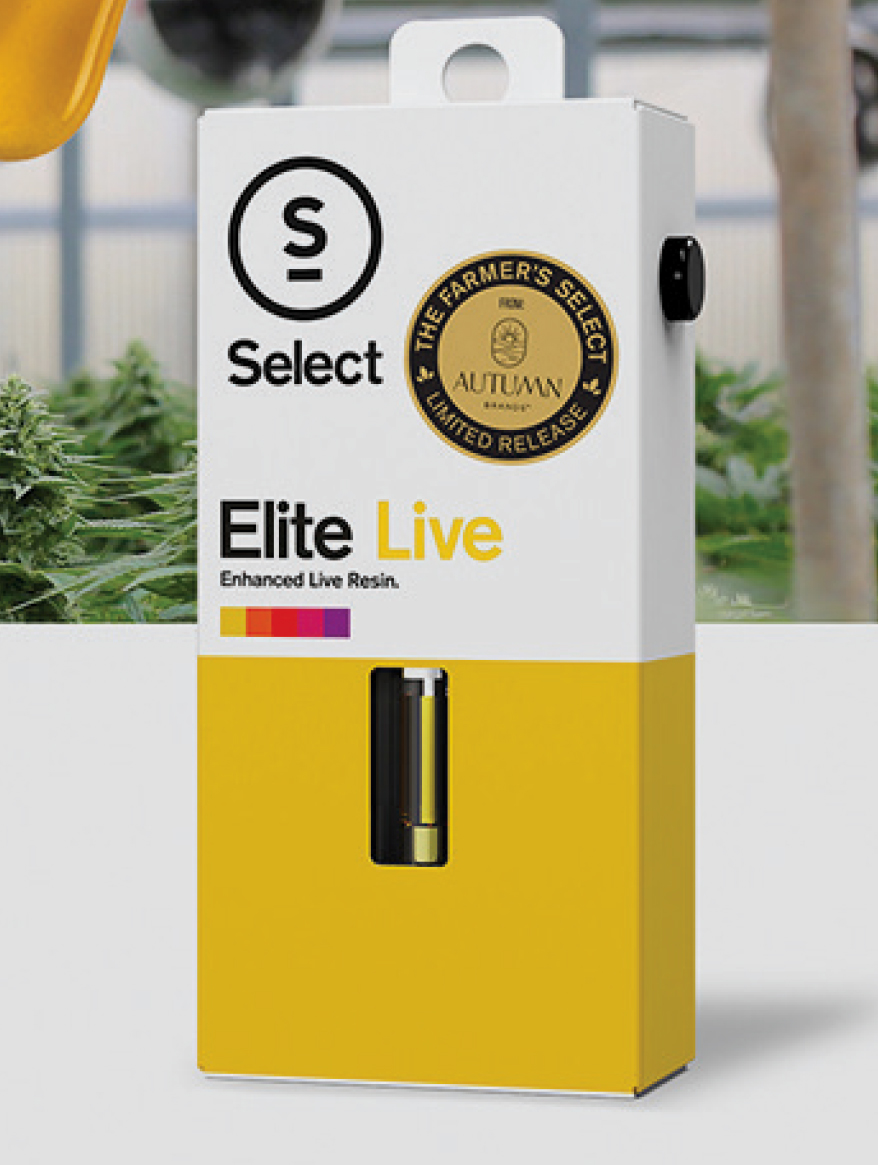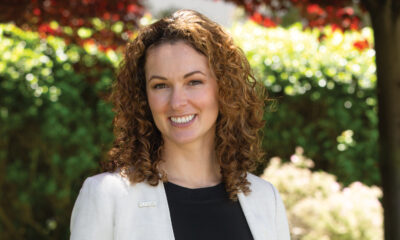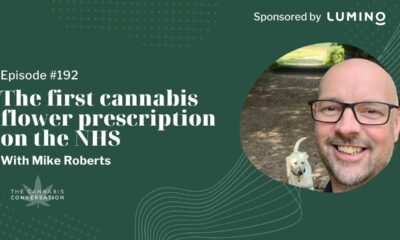MATT DARIN BEGAN his cannabis journey in Illinois when the state opened its medical cannabis market a decade ago. Darin and two partners leapt on the chance to apply for medical cannabis dispensary licenses in September 2014 and founded Grassroots Cannabis that same year. The company added a cultivation license to get vertically integrated almost from the start.
As co-founder and COO of Grassroots, Darin helped grow the company into one of the largest privately held multi-state operators (MSOs) in the United States. When Grassroots was acquired by Curaleaf in July 2020, it had 1,200 employees and more than 70 licenses to grow, process and dispense cannabis in 12 states.
Prior to his seven years in the cannabis industry, Darin was a founder and principal with Frontline Real Estate Partners, one of the most active commercial real estate companies in the Midwest.
After the Curaleaf-Grassroots deal closed, Darin served as president of Curaleaf’s central region operations with leadership responsibility for the company’s strategy and execution in eight states. He was named CEO of Curaleaf in May 2022.
Global Cannabis Times recently sat down with Matt Darin to discuss his thoughts on the current cannabis climate and his journey to the helm of the industry’s biggest public company, per our Global Cannabis 50 rankings published in December.
TOM ADAMS: Hi Matt, it’s a pleasure to talk to you again. Let’s start off with some background. Where did you grow up?
MATT DARIN: I was born and raised outside of Chicago, a child of the 80s, the Michael Jordan Bulls, the 1985 Bears. I had a wonderful childhood there and I spent all my formative years around Chicago and went to school all the way through college in my home state of Illinois.
Advertisement
TA: Tell us your cannabis origin story. Everybody’s got an interesting one!
MD: My cannabis story started like many peoples’ did—it’s in those teenage and college years when you’re going through discovery and I, you know, discovered cannabis in that era. Looking back, I had an observation even back in those days, which was that many of the smartest, most hardworking and good people, who were the coolest people who listened to the best music—so many of them were cannabis users, more than alcohol or other things.
That kind of stuck in the back of my mind as I progressed. I went to school. I was a CPA working in public accounting. I had the entrepreneurial bug, I went into commercial real estate and ultimately started a company with a couple of partners. I was going about my business as a father of young twins back in August of 2013. I was literally reading the Chicago Tribune newspaper when I read that Illinois had passed a medical cannabis law—which was really surprising to me, and I had to investigate further.

DOING IT ALL: Curaleaf is vertically integrated in most markets where it operates, occupying the supply chain from seed to end-user sale.
CURALEAF
NOTE: Prior to this issue going to press, Curaleaf announced the shutdown of operations in California, Oregon and Washington, consolidation of operations elsewhere, and layoffs for ~10 percent of staff.
Curaleaf is a multi-state U.S. operator (MSO) and international provider of cannabis products in the medical and adult-use markets. The company operates* in 21 U.S. states with 146 dispensaries and 29 cultivation sites. Curaleaf International has 15 medical licenses in 10 EU countries and two GMP-certified manufacturing facilities.
HQ: New York, NY
FOUNDED: 2010
IPO STATUS: Public
TICKER: CSE: CURA / OTCQX: CURLF
MARKET CAP (1/18/23, BLOOMBERG): $3.87B CAD (US$2.87B)
EMPLOYEE HEADCOUNT:* ~6,000
KEY ASSETS: Vertically integrated (cultivation, processing, distribution, retail and R&D) cannabis operations in the United States and Europe.
RETAIL BRANDS: Curaleaf
KEY PRODUCT BRANDS: Curaleaf, Endless Coast, Find Flower, Grassroots, Select
U.S. RETAIL LOCATIONS:* (146 total): Arizona (16), Colorado (2), Connecticut (4), Florida (56), Illinois (10), Maine (5), Maryland (4), Massachusetts (4), Michigan (3), Nevada (7), New Jersey (3), New York (4), North Dakota (4), Ohio (2), Oregon (1), Pennsylvania (18), Utah (1), Vermont (2)
KEY PEOPLE: Executive Chairman Boris Jordan, Vice Chairman Joseph Lusardi, CEO Matt Darin, CFO Ed Kremer, Curaleaf International President Miles Worne, Chief People Officer Tyneeha Rivers
RECENT ACQUISITIONS: 2019: Cura Partners (CAD$1.3B), Grassroots Cannabis ($830M) | 2020: Acres Cannabis ($70M), Select ($949M), BlueKudu (UD), Grassroots Cannabis ($875M) I 2021: EMMAC Life Sciences ($286M), Los Sueños Farms ($67M), National Remedy Patient Center ($13M) | 2022: Bloom Dispensaries ($211M), Four 20 Pharma (UD), Tryke Companies ($181M)
GLOBAL CANNABIS 50** (2022): 1
GCPP** RANK (2022): 4
WEBSITE: Curaleaf.com
*Numbers subject to change following Curaleaf’s restructuring.
**The GLOBAL CANNABIS 50 is an annual ranking of the largest public cannabis companies by revenue, published by Global Cannabis Times in our Nov-Dec issue. GCPP (GLOBAL CANNABIS POWER PLAYER) RANK is derived from rolling quarterly tracking of Crunchbase’s ranking of cannabis-focused companies in its 1.5+ million worldwide company database.
TA: What were the next steps you took? Did you have a business development idea?
MD: I actually remember it clearly. It was myself and my two partners from our real estate business. I remember walking into their offices and saying, we have to apply for these licenses. They’re only issuing 20 licenses to grow in Illinois and 60 licenses to dispense. This is a once-in-a-lifetime opportunity.
But I was definitely met with some significant skepticism right off the bat. It was a combination of things. There was the thought that there were political connections that we were going to need to win these scarce licenses, along with the investment of money. And there was potential reputational risk.
But [my partners] were open-minded enough to allow us to go on the journey and so I immediately dug in and started doing what we would do in our real estate business, which was to do due diligence and network. Meet people. Really try to understand the industry. And as I spent some time in Colorado and some in the West Coast states that were already legalizing cannabis, it was really eye-opening and I saw an incredible opportunity.
TA: I imagine some of those really were eye-opening opportunities. Maybe the first time you saw a giant indoor grow operation? I know that was a shocker to me.
MD: I do remember my first time walking into one, in Denver. These were early days when even the giant ones weren’t so giant. But it was definitely more innovative than some of the garages that cannabis was being grown in previously. And I was amazed at what was taking place in Colorado and California at the time.
To me, it was incredible that this was going to be happening in my home state of Illinois. So yeah, I knew I had to be part of being in on the ground floor of that.
TA: It seems everyone in cannabis has someone in their life that they found it a bit challenging to tell that they were planning to go into this industry. Maybe a spouse, parents, grandparents or the pastor or the high school football coach. Do you remember who yours was?
MD: Well, it’s funny. Our first dispensary that we opened in Chicago was near to the small town where I was living and raising my young kids at the time. I do remember in those early days as we were opening, when I would go to parent-teacher conferences and those types of things at the kids’ school, people would ask what I did. At the time, we definitely got some raised eyebrows.
But I think for every one person that was skeptical there were probably four or five that were asking where they could get free samples. So overall, I would say there was more interest and intrigue than there was disapproval or skepticism.
TA: As you were getting Grassroots going, Curaleaf was starting out in a similar timeframe. Can you tell us a little bit about that and how you came together?
Advertisement
MD: Curaleaf had very similar roots in the medical markets. Curaleaf’s roots were in the Northeast, where the founders were based, in New England, Massachusetts.
Both of us were really doing many of the same things in that era, 2015 through 2018.
We were both really focused on the medical markets—on being new entrants and first movers in some of the Eastern limited license markets. We were really focused on the medical efficacy of cannabis and focused on building great teams, great quality products and all those things.
We were really running on parallel paths, Grassroots in the Midwest in the early days and Curaleaf more on the East Coast. Ultimately, we ended up meeting through the course of you know, just being in the industry and we really hit it off from the start.
TA: Had Curaleaf expanded beyond the Northeast already at the time of the Grassroots acquisition?
MD: It had. Curaleaf had expanded significantly by the time we ultimately closed the Grassroots transaction. It had a major presence in Florida and made a major move over to the West Coast through the Select acquisition, which closed in January 2020.
I like to say that Curaleaf had the donut—the East Coast and the West Coast—and Grassroots was the donut hole in the middle of the donut, filling in most of the central part of the country and some additional states, East and West.
That was really the rationale behind the combination. Curaleaf was able to add some key markets, like Illinois and Pennsylvania, and Grassroots was able to expand East and West. And Curaleaf-Grassroots closed in July 2020.
TA: During that pre-Grassroots era, was Curaleaf’s growth mostly by acquisition or was it more organic via license-by-license growth?
MD: It was a combination, I think. Curaleaf did quite a bit of M&A. Throughout a number of different markets, they would do some bolt-on acquisitions in markets they were already operating in. But there was also quite a bit of organic growth as well, where Curaleaf was on the ground floor of new markets as they first opened up and issued licenses. They did this in places like New York and their medical market when that first opened. Curaleaf was one of the first companies to participate in it. It was really a combination of the two.
TA: What about Grassroots? Were you busy acquiring other companies, too? Or were you just licensing your way into new states as you went along?
MD: For the most part, Grassroots grew organically out of that Chicago market. We started in Illinois on the retail side of the business—operating dispensaries. We quickly saw the opportunity to be vertically integrated and the importance of being able to have access to the entire supply chain of cultivation, processing and retail.
We acquired one of the early grow licenses in Illinois that was not yet operational. We got that facility operational. Then new states on the East Coast started to issue limited licenses. As their medical markets opened, it was through processes similar to the one Illinois had run—which was really the first of its kind to run a merit-based application process, back in 2014.
Grassroots started applying in Eastern markets, starting with Maryland and Pennsylvania. We expanded by winning licenses in some of those early markets and getting boots on the ground there early.
TA: You mentioned seeing there was an opportunity to be vertically integrated. That’s a business model that is not taught in business school. I can’t think of another industry that has it, right? Almost all retail products are very specialized in terms of who does what along the supply chain. What made it appear to you that this was the model that was going to work in cannabis?
MD: You’re right. It’s hard to think of another industry that matches the business plan of what the multi-state operators like Curaleaf do, in terms of really doing everything from the seed to the end sale. We do agriculture. We’re doing manufacturing and consumer product innovations, all the way through distribution and operating retail stores. It really is unique.
But I think from the early days of the industry you could see that this was an incredibly compelling opportunity to control your own destiny with products that you were making available to your medical patients and then to general consumers. And to really have that ability to capture all of that margin from manufacturing all the way through retail. It was unlike industries like liquor where there were mandated levels of distribution—it was really unique that in most cannabis markets, you were able to really be involved in that entire supply chain.
In retrospect, getting involved in all aspects of the business early on, and all the difficult lessons learned, and all the challenges that were faced in those early days when the industry was really in its infancy, it’s all been invaluable as the market has matured and progressed. Because it takes time to really get to excellence across all those different aspects of the supply chain.
What was clear from the beginning was that cannabis was going to be very capital-intensive and difficult, but would also represent one of the biggest opportunities available.

SELECT THE BEST: Curaleaf recently teamed up with family-owned, Santa Barbara, CA-based Autumn Brands for its third ‘Farmer’s Select’ collaboration—a limited-release, enhanced live resin in three strains: Jetlato (sativa), Pineapple MAC (hybrid) and Banana Jelly (indica).
TA: Now that you’ve assembled this asset group in 19 different states, which of those states do you think matter most to Curaleaf’s future?
MD: Curaleaf today has the biggest footprint, globally. It’s actually 21 states in the U.S. and eight countries in Europe. We view that as a real competitive advantage, to be able to have that breadth and depth across all of the key markets in this country, and now with the growth engine taking place in Europe.
We look at certain things in terms of where we want to most dedicate our resources and our time and our focus. It’s a combination of demographics in the state, population, geography—but also, just as importantly, the regulatory framework and the structure that’s been put in place in terms of supply and demand and enforcement of the illicit market, and some of these different types of factors.
There are some very key markets that have been extremely successful for Curaleaf. We’re very focused on places like New Jersey, which we were very excited to see launch adult-use in 2022. Florida, which is by far the largest medical market in the country. Markets like Illinois, which was really the first of its kind east of the Mississippi to issue the type of regulatory framework that it did.
TA: What about one of the biggest prizes, New York? Certainly, regulatory issues are going to be paramount there. There’s going to be some severe limitations on how big you can get, at least in recreational retail in New York. What are you guys thinking about New York at this point?
MD: We’re taking a long view of New York. We were one of the founders of the medical program in the state. We helped draft the medical law. We’ve been in that market since the beginning, we have the largest market share in New York. And we’re also based there. Our founders are from there, so it’s very near and dear to our hearts, and we want to make sure that New York ultimately has the very successful, thriving adult-use program it deserves.
I think often in the cannabis industry, patience is not necessarily always a virtue. But I think we need to be a little bit patient with New York. We need to understand that when these adult-use launches happen, they look different every single time. I think there’s also an awareness and growing recognition that there’s an important role to play for the medical-registered organizations.
We are the ones that have the capacity to sell into the market. We already have a great portfolio of products and brands. We want to be a facilitator and a vehicle for a very successful [New York adult-use] program. There’s also growing awareness to that, I would also say, there’s a need for enforcement of the illicit market. There’s heightened awareness of what’s taking place, especially in New York City, with the number of illegal storefronts and just the proliferation of the illicit market.
TA: Let’s jump overseas. You guys bided your time and just moved into Europe recently with the EMMAC and Four 20 Pharma acquisitions. Talk to us a little bit about the opportunity you see in Europe.
MD: We’re very excited about the international opportunity. I think one of the really interesting storylines for this industry is that this is not a U.S. or a North American-driven story at this point. This is a global phenomenon that’s taking place in terms of the legalization of cannabis for both medical and adult-use purposes.
We made an entry into Europe a couple of years ago. We’ve been really focused on, in a lot of ways, doing the same playbook that we did in the U.S. a number of years ago.
Germany is certainly the driver of Europe. They are moving expeditiously to draft and finalize adult-use regulations that we believe will be in place for 2024. We’re very excited for that and we’re also really excited for the UK. The UK has a medical market that is still in its early stages, but has an immense amount of opportunity for growth. It’s an area that we are very focused on. We have a great team based in the UK that is working to continue to expand the medical program.
Advertisement
TA: Let’s talk about some of the more challenging aspects of running a cannabis company, like the vape crisis of 2019, for example. Is an industry-wide structure needed to deal with health concerns as they come up?
MD: I think that if you were to point to the single biggest challenge of this industry—and there are many, certainly this is not an easy industry—the biggest is still the state-by-state nature of the patchwork of regulations and rules and standards and ways that business is done. I think ultimately, as this industry matures and evolves, one of the big things [that will happen] is some degree of standardization and consistency.
TA: You guys are a public company, of course, the biggest of them, and therefore face a lot higher visibility. Are there proactive steps that you can take to limit the distraction and damage of things like the recent news stories about the Russian oligarch investments early on in Curaleaf?
MD: High visibility is good and bad. On the good side, there’s a tremendous amount of interest in the industry and that can be a very good thing, because it really attracts attention and awareness of the companies and the great things that we’re doing. But it also has its downsides as well, because there is such a spotlight and oftentimes information that may or may not be accurate goes out into the into the public sphere that can make it challenging at times. But look, we’re focused on our business and what we have on our plates today, which is a lot, and we’re really proud of what Curaleaf has built. It’s 6,000 really proud employees throughout the world now that are doing some great things to bring cannabis into the legitimate world. So that’s what I’m focused on.
TA: Matt, thank you very much for your time. It’s been great to talk to you today.
MD: My pleasure.


 Cover Features11 months ago
Cover Features11 months ago
 Cover Features11 months ago
Cover Features11 months ago
 Legal9 months ago
Legal9 months ago
 Branding10 months ago
Branding10 months ago
 Products9 months ago
Products9 months ago
 Business12 months ago
Business12 months ago
 Branding12 months ago
Branding12 months ago
 Podcasts11 months ago
Podcasts11 months ago










